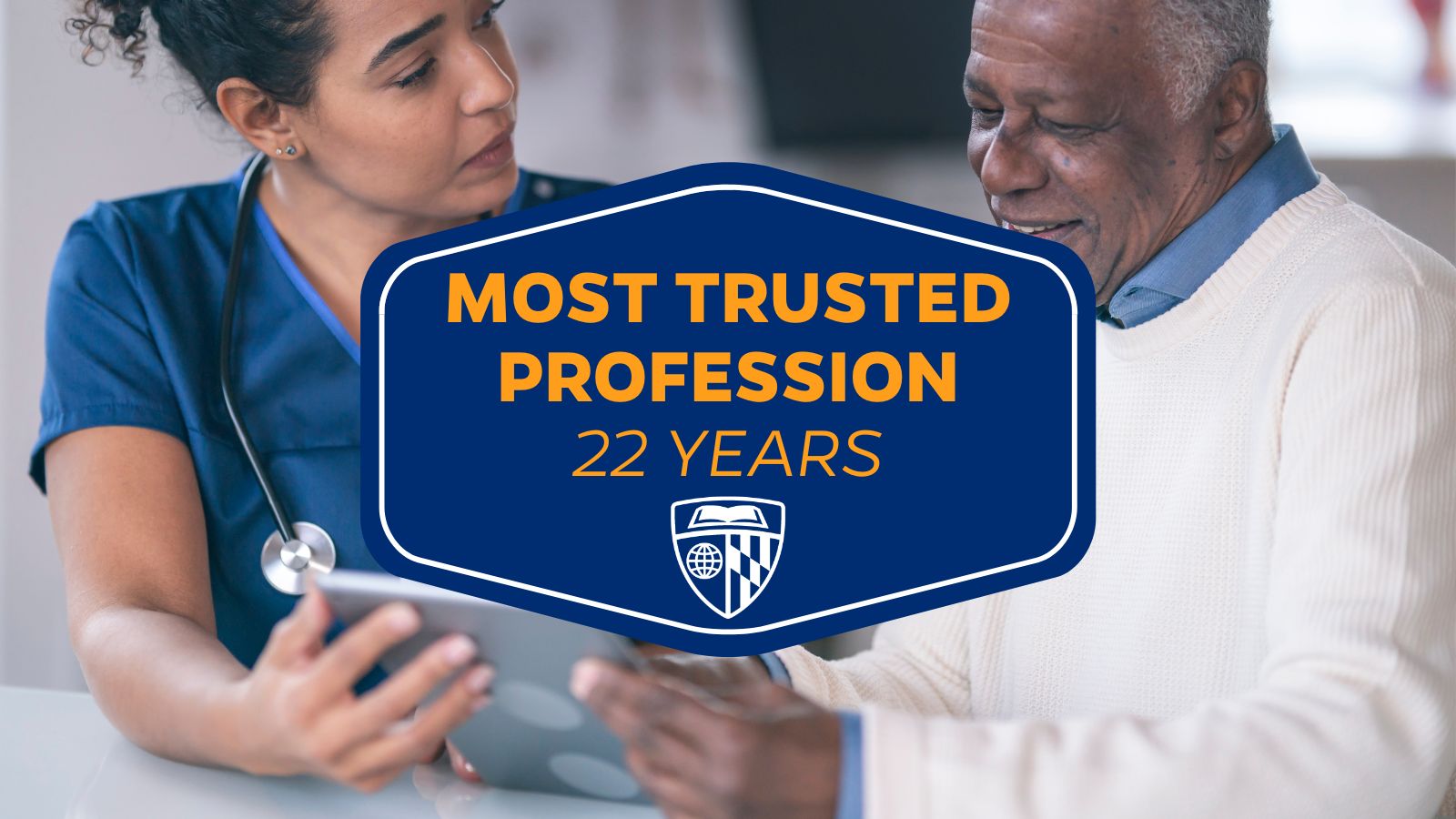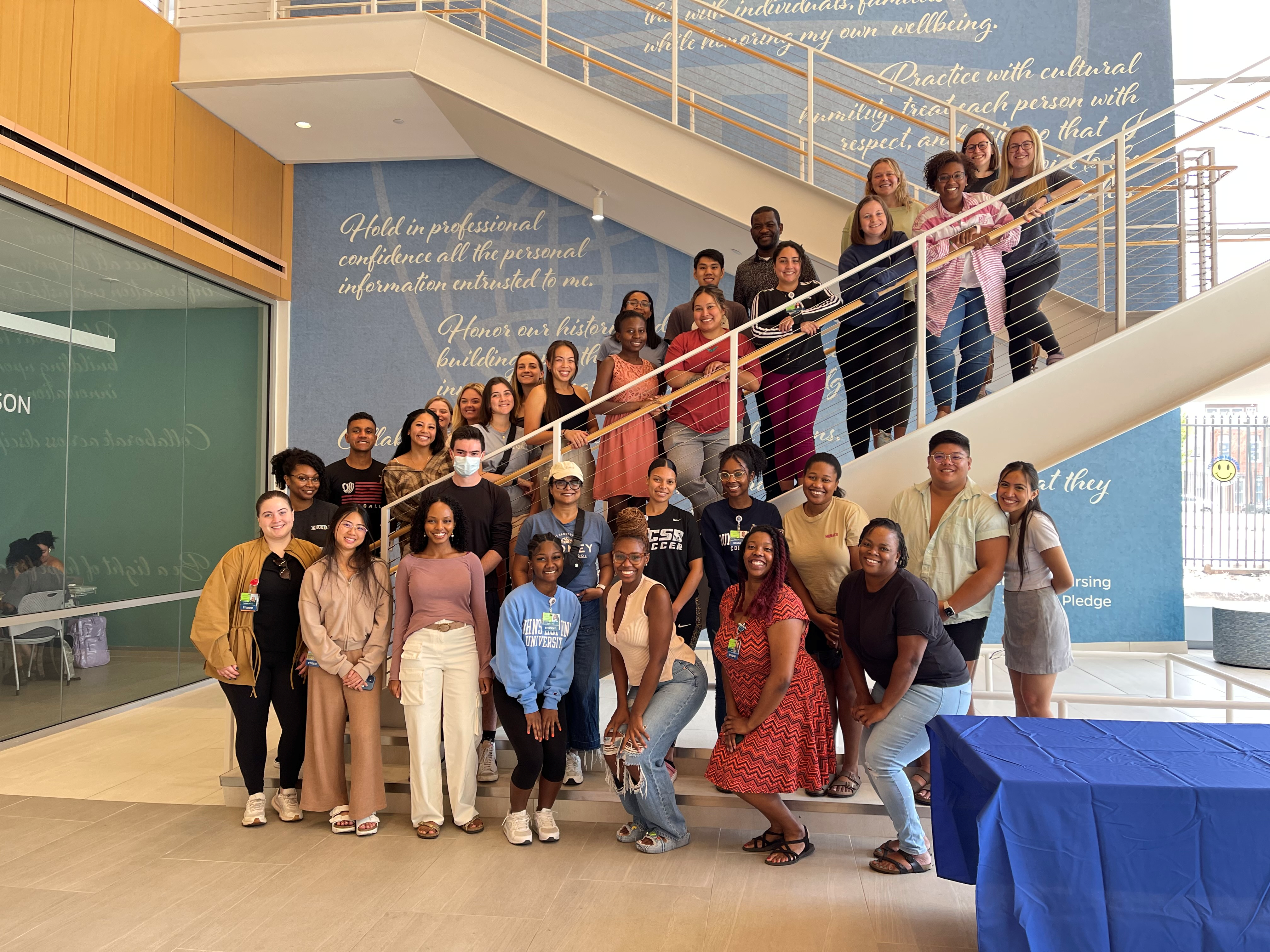Clinical rotations have been, for me, the most challenging part of nursing school in my first six weeks. School comes easy to me, but being in the hospital, I have discovered, does not.
At clinical, we get to practice the skills that we have learned in our Health Assessment and Principles and Applications labs, which is an incredible opportunity. We are allowed not only to take vital signs and perform assessments, but also to dress wounds, and eventually even administer medications. But these “hard” skills are fairly mechanical – it is the “soft skills,” e.g. educating a patient, advocating for a patient, helping them plan their care, and providing verbal or physical comfort which are, in my opinion, the true challenge of the job, and greatly impact the efficacy of the “hard skills” as well. They require the nurse’s critical thinking, experience, articulateness, and most importantly, mindful presence. These are the skills that I think of as being a part of my everyday life, but that I have found surprisingly difficult when confronted with very sick patients in the hospital.
Touching the patients seems like such a simple form of communication and comfort for patients, but it’s difficult to get used to touching people, especially people who are in pain or have very delicate bodies. For example, last week I helped a patient who was experiencing terrible pain but did not want pain medication, as I think it made her feel like she was “giving in” to being sick. At one point when a classmate and I were with her, she started to cry. We offered verbal comfort, and assured her that the nurses and doctors were working as quickly as possible to help her get better, but I wish I had gone further and touched her.
Pain and suffering are intertwined in both the spinal cord and the spirit – when we are unhappy, pain is worse. I wish that I had reached out to hold this patient’s hand, and I wish I had offered to rub her back, or her feet or hands. I know it would have made her feel better, and might have even decreased her pain. But I didn’t do it, because I was too intimidated by this tiny, frail woman to reach out to touch her. Getting over that fear doesn’t just take experience or practice, but it takes planning, presence of mind, and an ability to communicate clearly with the patient. I’ve promised myself not to let an opportunity to provide comfort slide next week or the weeks after.
I have to add that I have found comfort in the classmates in my clinical group. Although helping patients in the hospital is enormously rewarding, as I’ve shown above, it’s also a big challenge. As a clinical group, we support each other, offer help, and laugh together. We think about each other’s patients and share ideas. I think that the fellowship among our group flows out to our patients, who are often, unlike us, alone and scared.
 You’re Welcome
You’re Welcome Nursing Named Most Trusted Profession for 22nd Consecutive Year
Nursing Named Most Trusted Profession for 22nd Consecutive Year Best of On The Pulse 2023
Best of On The Pulse 2023 From the Dean: Here & Now
From the Dean: Here & Now The Learning Collaborative: ‘I Think I Can, I Think I Can …’
The Learning Collaborative: ‘I Think I Can, I Think I Can …’







